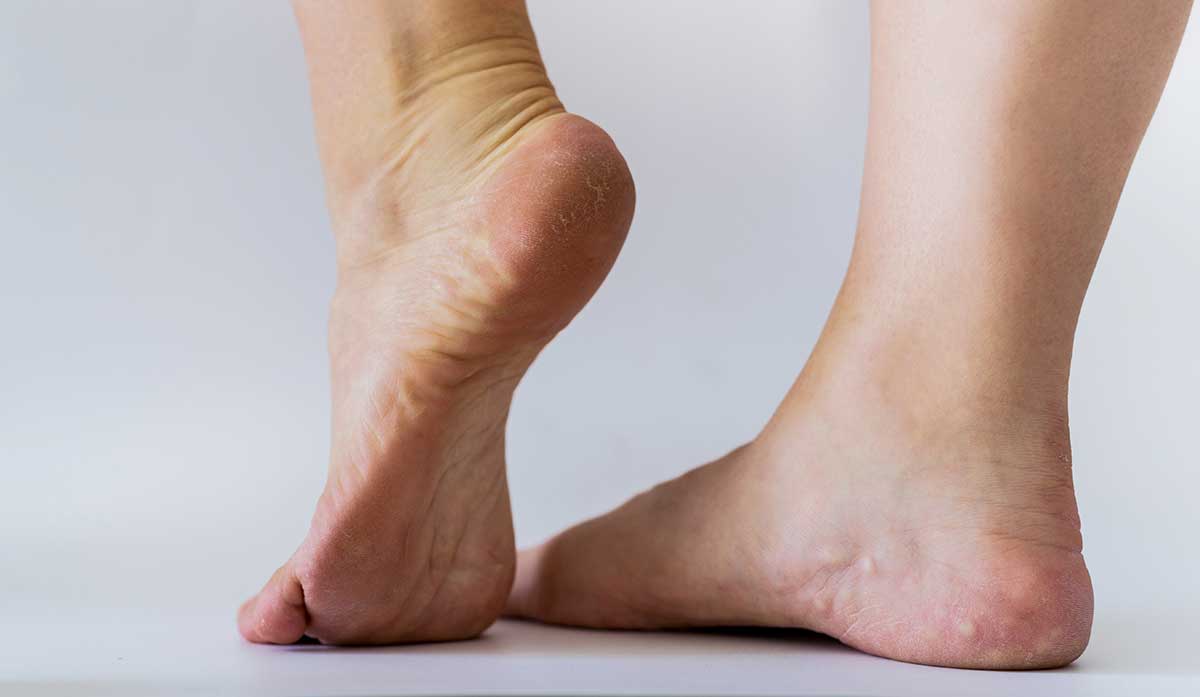Lumps and Bumps on your Feet?
Quite often, patients come to our clinic with bumps on their tissue and ask us what they are. Usually, these findings are incidental, normal, not painful and not sinister. As with any condition that walks through our doors, the diagnosis is very important so consulting with a suitable practitioner who can accurately diagnose your condition is vital. Two lesser-known conditions that occur in the foot are plantar fibromatosis and piezogenic pedal papules.
Plantar Fibromatosis
Plantar fibromatosis is a relatively rare condition in which fibrotic tissue gathers in the bottom of the foot. Also referred to as ledderhose disease, the cause for these lumps in the bottom of the foot are generally unknown. Plantar fibromatosis is benign and it occurs in the aponeurosis of the plantar fascia. It occurs more frequently in men between the ages of 30-50. People with other soft tissue contractures (such as Dupuytren’s), diabetes, epilepsy, alcoholics people with liver disease and keloids are thought to be at a greater risk for developing plantar fibromatosis. Although the fibromatosis is not painful, pain may occur in the bottom of the foot because of the lesion taking up space. Logically, prolonged standing, running, and stretching can be uncomfortable.
The diagnosis of plantar fibromatosis can usually be done clinically. Soft tissue imaging (such as ultrasound or MRI) can clarify the nature of the lesion but usually isn’t necessary. Conservative treatment of plantar fibromatosis can include manual therapy, graston, active release technique, stretching, strengthening, footwear modification and orthotics. For more symptomatic and larger lesions, consultation with a medical foot specialist may be warranted. In some cases, topical medication or cortisone injections might be helpful. For very large lesions surgical excision can be considered.
Piezogenic Pedal Papules
Piezogenic pedal papules are small, yellow to white bumps that occur on the bottom and sides of the foot when weight bearing, and they disappear when non-weightbearing. They can also present when pressure is applied to the foot. They are generally considered as normal variants and are not usually painful. They are small herniations of subcutaneous tissue. As an example, imagine a sausage with pencil-sized holes in the skin of the sausage and the meat bulging through those holes when pressure is applied. Piezogenic pedal papules have a relation to weak collagen which is why the tissue extrudes through the weakened tissue wall. Given the relationship to weak collagen, piezogenic pedal papules have been linked to various connective tissue disorders such as Ehlers-Danlos and Prader-Willi. Although the research hasn’t given us a specific cause and there still is much to be learned about this condition, we do know that certain populations are more at risk for piezogenic pedal papules. Those who are obese, those with flat feet and people who stand a lot are more likely to experience these papules. Logically, figure skaters, long distance runners and those who participate in high-impact sports with lots of jumping often present with these papules.
In most cases of piezogenic pedal papules there is no pain. As such, we don’t really know much about this phenomenon, and we don’t know the incidence because most cases likely go undiagnosed or unnoticed. At a clinic like Burlington Sports Therapy, we don’t really treat symptomatic piezogenic pedal papules. If there is suspicion of these lesions being a pain generator we would recommend those patients consult with their medical doctor and discuss referral to a suitable medical specialist with experience in this rare situation. That being said, we would recommend the patient strengthen the intrinsic muscles of the foot and we would counsel these patients on avoiding aggravating factors and modifying their activities as such.
By: Dr. Kevin McIntyre B.Kin., DC
References
Young JR, Sternback S, Willinger M et al. Orthop Res Rev 2018.
Shelley WB, Rawnsley HM. Painful feet due to herniation of fat. JAMA. 1968 Jul 29;205(5):308-9.
Laing VB, Fleischer AB. Piezogenic wrist papules: a common and asymptomatic finding. J Am Acad Dermatol. 1991 Mar;24(3):415-7.
Mai Y, Nishie W, Sugai T, Imafuku K, Arita K, Shimizu H. Disappearing subcutaneous papules and nodules: Characteristic features of muscle herniation and piezogenic pedal papules. J Dermatol. 2017 Dec;44(12):e361-e362.








